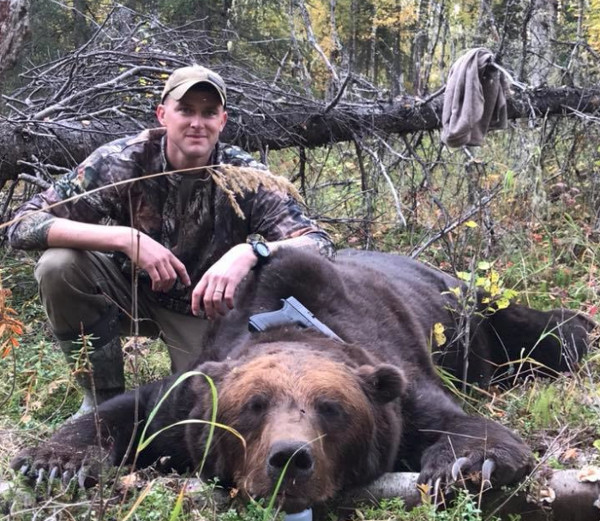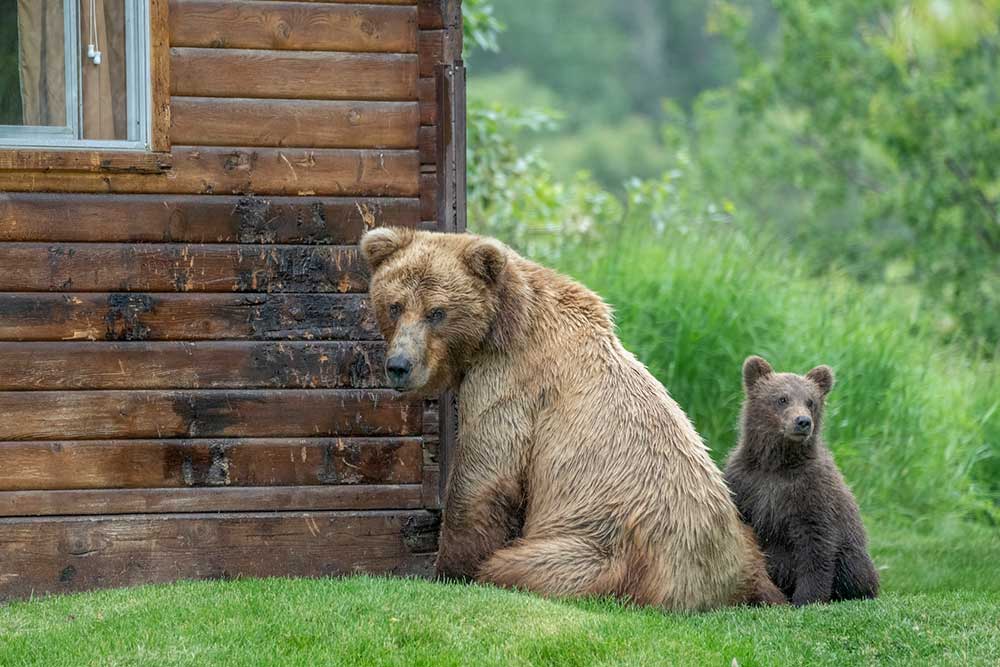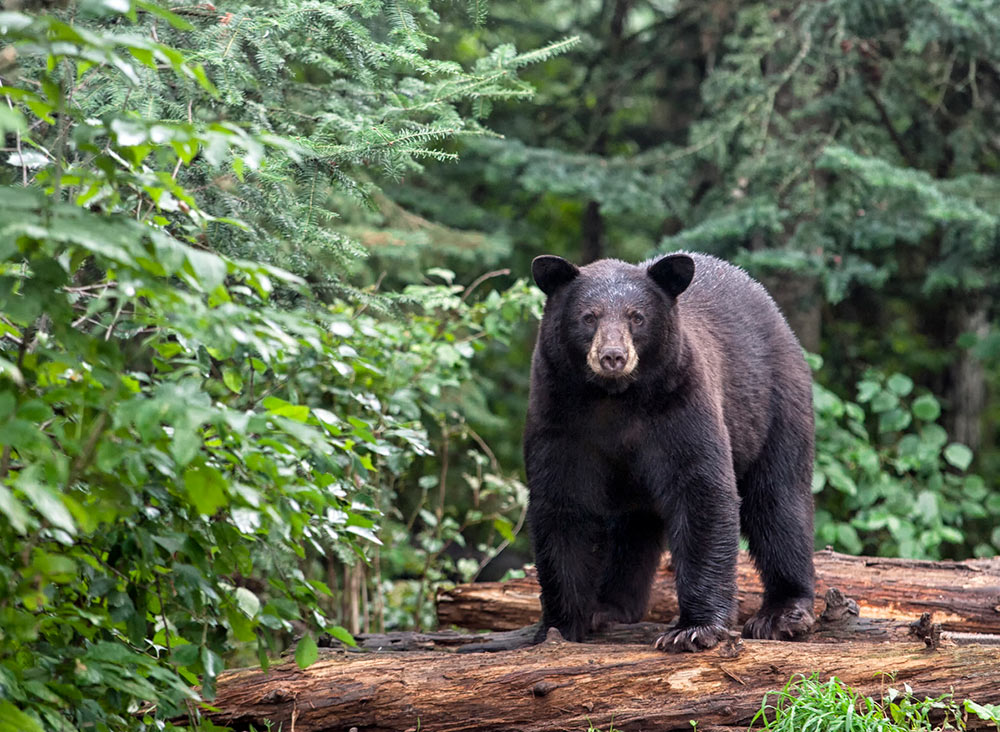- Joined
- Sep 18, 2008
- Messages
- 32,308
- Reaction score
- 46,961
So in my hunt for the perfect hiking gun, I've now narrowed it down to the Ruger gp100 revolver in .357.
I'll explain each decision along the way in case it helps any of you.
1. Are you stupid?
Yes.
2. Why not a .44? Everyone knows that's the bear killer.
I've read all 170 documented accounts of a human using a handgun to defend against a bear. And learned that handguns are highly effective (though not guaranteed) regardless of caliber.
Source: https://www.ammoland.com/2023/11/ha...-bears-170-documented-incidents-98-effective/
Basically any gun can scare off a curious bear, but if it's on full-on attack mode, you'll get 1-3 shots off before the bear is on top of you. So accuracy, speed of shots, and penetration are key.
I'm simply not confident that I can get 3 shots accurately in a split second with a .44 due to the massive recoil.
However, a .357 on the other hand, should penetrate roughly the same as a .44 but with manageable recoil. I recognize the wound channel will be smaller, but that's a trade-off I'm willing to accept.
3. Why a revolver? Are you 79 years old? All the cool kids use a 10mm semi-auto.
I seriously considered a 10mm, but in researching them I discovered that a ton of them seem to have feed issues with the hot loads like buffalo bore and underwood hard cast ammo that I'd be using for bear defense.
4. But a 10mm ammo holds way more ammo! Are you stupid?
Yes.
Remember what I said above about having 3 shots at most before the bear is on you? So the extra ammo capacity is not as important as having something that shoots 6 (or 7) reliably.
5. Ha! My 10mm is as reliable as they come! I've never had a problem with it!
Limp wristing is not a problem for you on the range, but when a bear is chewing on your arm and you have to use your other arm to shoot from whatever odd angle you can manage, your chances of limp-wristing go up by a bajillion percent. Now add the fact that the ammo I'm using is already more likely to jam, I'm really not liking my odds of survival.
Now add one more fact to the mix. If you do get a jam, you will have to clear it with one hand. Can you do that? I mean I can, but not every time. And it will be even harder with a bear tossing your salad.
Better to have 6 shots that always fire than to have 12-18 that will jam every time you don't brace your arm properly while your face is being eaten.
6. Ok but then why a Ruger and not a Smith and Wesson?
S&W has a great reputation for sure, but it seems like in recent years their quality control is lacking and their customer service sucks balls.
Ruger doesn't have quite the stellar reputation that S&W has, so they have to work harder to keep their customers happy. And I've heard really good things about the quality of their revolvers as well as their customer service if something goes wrong.
Plus they're not ridiculously expensive like colts or korth. I'm trying to save my arm and leg from being eaten, not spend them on a gun.
I'll explain each decision along the way in case it helps any of you.
1. Are you stupid?
Yes.
2. Why not a .44? Everyone knows that's the bear killer.
I've read all 170 documented accounts of a human using a handgun to defend against a bear. And learned that handguns are highly effective (though not guaranteed) regardless of caliber.
Source: https://www.ammoland.com/2023/11/ha...-bears-170-documented-incidents-98-effective/
Basically any gun can scare off a curious bear, but if it's on full-on attack mode, you'll get 1-3 shots off before the bear is on top of you. So accuracy, speed of shots, and penetration are key.
I'm simply not confident that I can get 3 shots accurately in a split second with a .44 due to the massive recoil.
However, a .357 on the other hand, should penetrate roughly the same as a .44 but with manageable recoil. I recognize the wound channel will be smaller, but that's a trade-off I'm willing to accept.
3. Why a revolver? Are you 79 years old? All the cool kids use a 10mm semi-auto.
I seriously considered a 10mm, but in researching them I discovered that a ton of them seem to have feed issues with the hot loads like buffalo bore and underwood hard cast ammo that I'd be using for bear defense.
4. But a 10mm ammo holds way more ammo! Are you stupid?
Yes.
Remember what I said above about having 3 shots at most before the bear is on you? So the extra ammo capacity is not as important as having something that shoots 6 (or 7) reliably.
5. Ha! My 10mm is as reliable as they come! I've never had a problem with it!
Limp wristing is not a problem for you on the range, but when a bear is chewing on your arm and you have to use your other arm to shoot from whatever odd angle you can manage, your chances of limp-wristing go up by a bajillion percent. Now add the fact that the ammo I'm using is already more likely to jam, I'm really not liking my odds of survival.
Now add one more fact to the mix. If you do get a jam, you will have to clear it with one hand. Can you do that? I mean I can, but not every time. And it will be even harder with a bear tossing your salad.
Better to have 6 shots that always fire than to have 12-18 that will jam every time you don't brace your arm properly while your face is being eaten.
6. Ok but then why a Ruger and not a Smith and Wesson?
S&W has a great reputation for sure, but it seems like in recent years their quality control is lacking and their customer service sucks balls.
Ruger doesn't have quite the stellar reputation that S&W has, so they have to work harder to keep their customers happy. And I've heard really good things about the quality of their revolvers as well as their customer service if something goes wrong.
Plus they're not ridiculously expensive like colts or korth. I'm trying to save my arm and leg from being eaten, not spend them on a gun.
Last edited:



